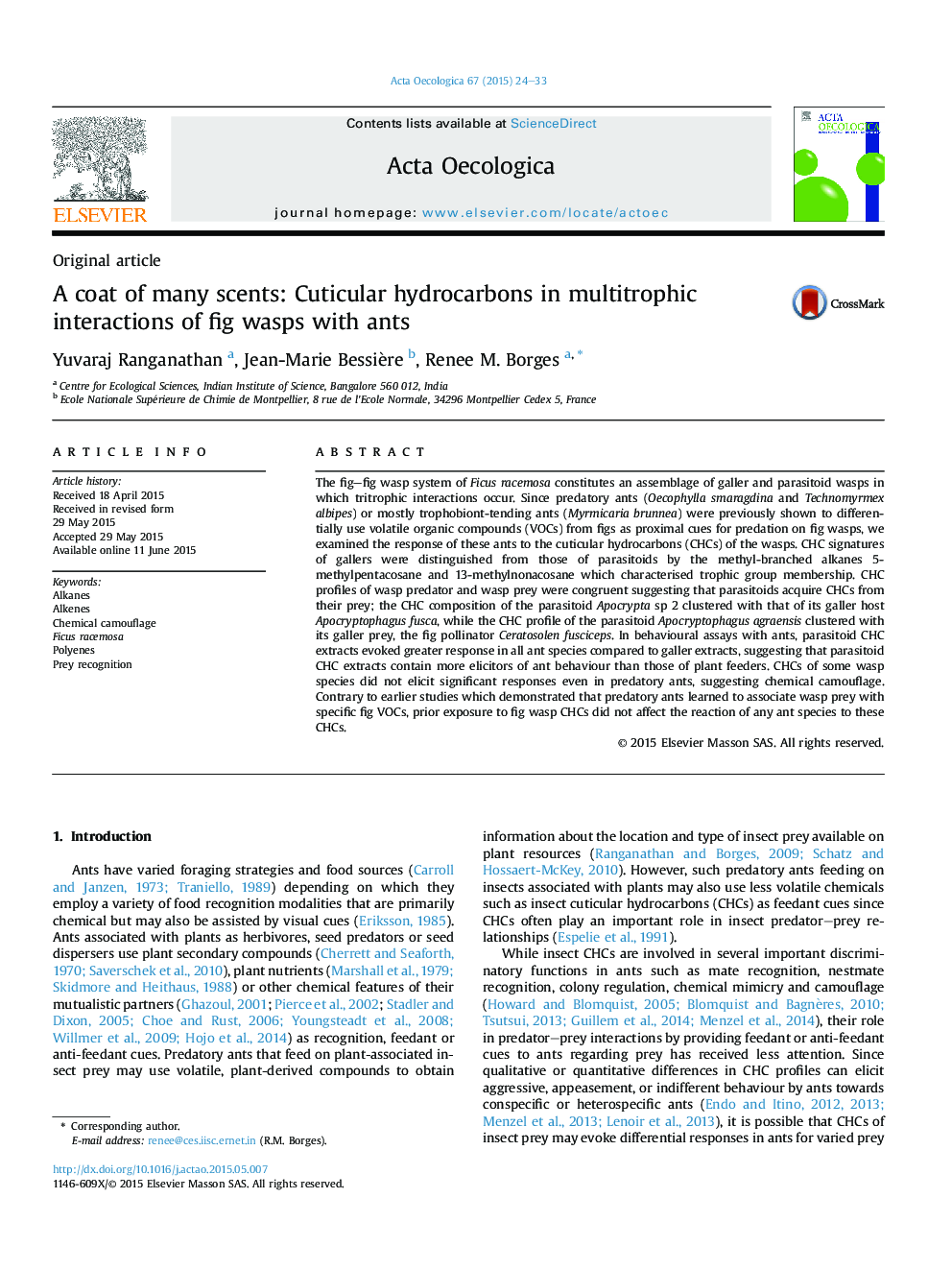| کد مقاله | کد نشریه | سال انتشار | مقاله انگلیسی | نسخه تمام متن |
|---|---|---|---|---|
| 4380817 | 1617705 | 2015 | 10 صفحه PDF | دانلود رایگان |
• Cuticular hydrocarbon profiles of a five-species fig wasp community was examined.
• Methyl-branched alkanes and alkenes dominated the CHC profiles.
• CHC profiles of galler wasps could be distinguished from those of parasitoid wasps.
• CHC profiles of parasitoids clustered with those of their prey.
The fig–fig wasp system of Ficus racemosa constitutes an assemblage of galler and parasitoid wasps in which tritrophic interactions occur. Since predatory ants (Oecophylla smaragdina and Technomyrmex albipes) or mostly trophobiont-tending ants (Myrmicaria brunnea) were previously shown to differentially use volatile organic compounds (VOCs) from figs as proximal cues for predation on fig wasps, we examined the response of these ants to the cuticular hydrocarbons (CHCs) of the wasps. CHC signatures of gallers were distinguished from those of parasitoids by the methyl-branched alkanes 5-methylpentacosane and 13-methylnonacosane which characterised trophic group membership. CHC profiles of wasp predator and wasp prey were congruent suggesting that parasitoids acquire CHCs from their prey; the CHC composition of the parasitoid Apocrypta sp 2 clustered with that of its galler host Apocryptophagus fusca, while the CHC profile of the parasitoid Apocryptophagus agraensis clustered with its galler prey, the fig pollinator Ceratosolen fusciceps. In behavioural assays with ants, parasitoid CHC extracts evoked greater response in all ant species compared to galler extracts, suggesting that parasitoid CHC extracts contain more elicitors of ant behaviour than those of plant feeders. CHCs of some wasp species did not elicit significant responses even in predatory ants, suggesting chemical camouflage. Contrary to earlier studies which demonstrated that predatory ants learned to associate wasp prey with specific fig VOCs, prior exposure to fig wasp CHCs did not affect the reaction of any ant species to these CHCs.
Figure optionsDownload as PowerPoint slide
Journal: Acta Oecologica - Volume 67, August 2015, Pages 24–33
